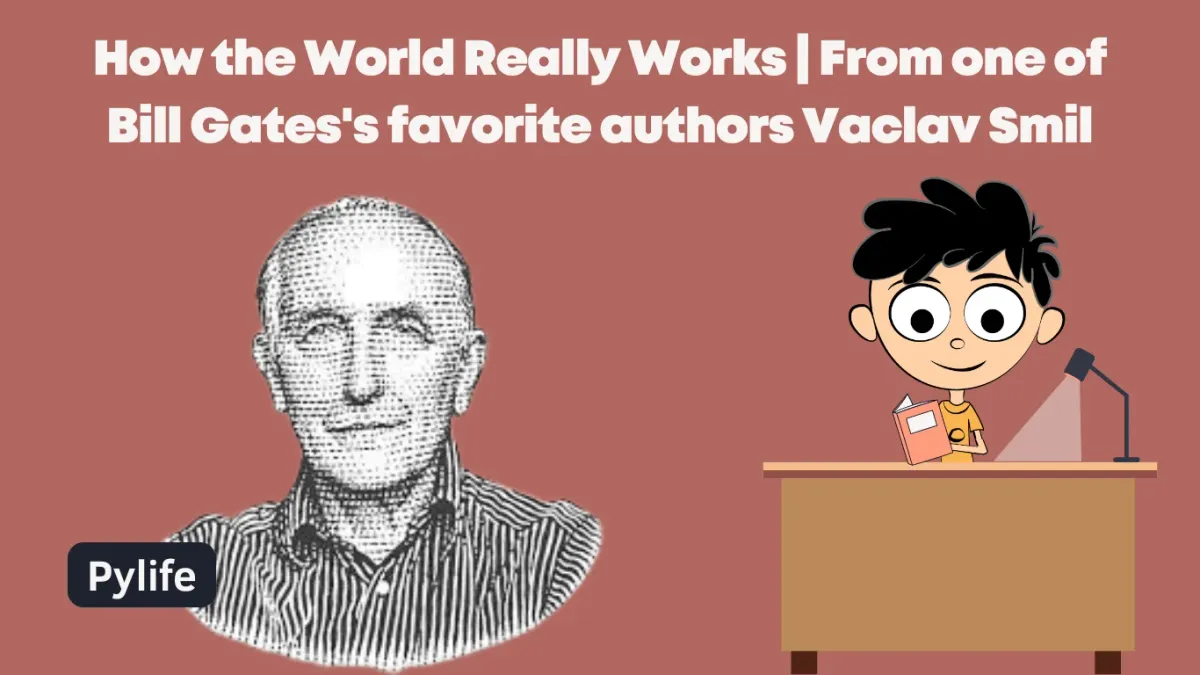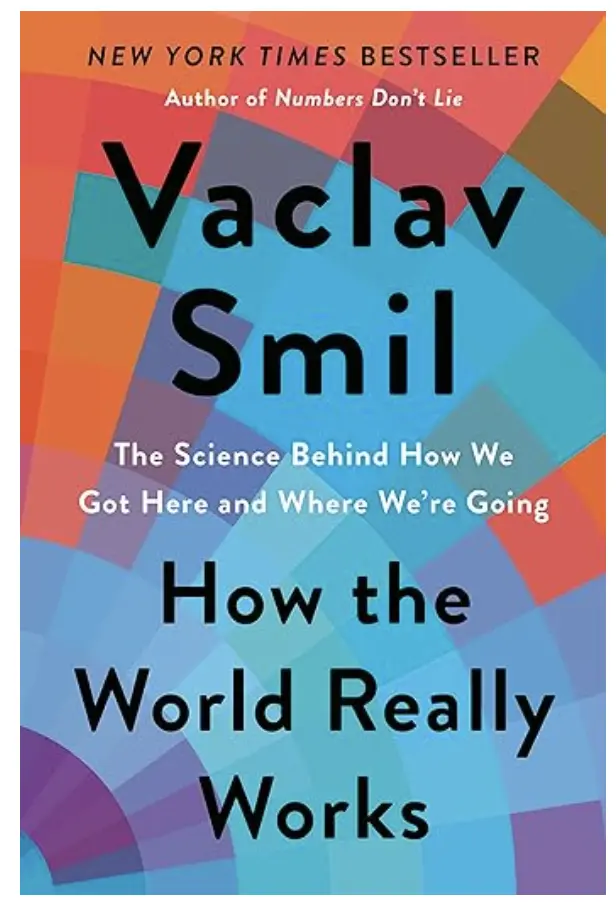How the World Really Works | From one of Bill Gates's favorite authors Vaclav Smil
Here, I have shared a book review of a book that might provide you with insights into how things really work in the world.

Are you interested in learning about our past, present, and future? "How the World Really Works" by Vaclav Smil, a Czech-Canadian scientist and policy analyst, is a compelling exploration of the fundamental forces shaping the modern world. This book offers a balanced perspective, avoiding both extreme techno-optimism and catastrophism. It's a great read if you want a brief yet thorough understanding of the key forces influencing our lives.
In another book, "Growth," Smil discusses the impossibility of infinite growth on a finite planet. However, in "How the World Really Works," he is less concerned about the exhaustion of mineral resources. Smil describes himself as neither a pessimist nor an optimist, but a scientist explaining how the world functions. He emphasizes that his goal is not to diminish our progress but to show our current position and what changes are needed to advance our civilization.
The book covers seven essential topics, focusing on often overlooked or misunderstood forces that shape our daily lives. It systematically examines energy, food production, materials, globalization, and risks, revealing the intricate dependencies sustaining the world. In his extensive body of work, including over 50 books, Smil delves into complex subjects like agriculture, manufacturing, and shipping.
An expert in energy, environment, and economic systems, Smil explores the world's inner workings, exposing the complex web of interactions that govern our planet. He argues that understanding these forces is crucial for addressing humanity's challenges and opportunities in the 21st century.
So, How does the world work, According to Smil?

The book begins by exploring the crucial role of energy in human progress, from early photosynthesis to modern solar and nuclear power. Key points include:
- Energy: Civilization relies on energy consumption, primarily fossil fuels, which underpin transportation, manufacturing, food production, and digital communication.
- Food Production: Smil critiques the complex system that feeds the planet, highlighting modern agriculture's efficiency and environmental impacts, and the need to balance feeding a growing population with preserving natural resources.
- Materials: He discusses the building blocks of civilization—concrete, steel, plastic, and semiconductors—explaining their role in technological advancement and the environmental challenges they pose.
- Globalization: Analyzing its impact on the economic and cultural landscape, Smil provides a balanced view, recognizing the benefits of interconnected economies and the vulnerabilities they introduce, such as supply chain disruptions and economic inequalities.
- Risk: Smil examines our ability to manage risks, from natural disasters to pandemics, advocating for a more informed and rational approach to risk assessment and decision-making.
What's Inside "How the World Really Works"?
How the World Really Works" examines key milestones in human history, from harnessing fire to modern agriculture and fossil fuels, illustrating how energy conversion has reshaped our environment and existence. The discovery of coal after 1600 led to steam engines, initiating the Industrial Age. Modern energy sources like crude oil, wind turbines, geothermal, nuclear, and solar power now influence every aspect of life, from work to transport.
Energy conversion is central to human progress, empowering us to dominate the world. For example, food production relies on solar radiation and fossil fuels, with the latter powering machinery essential for harvesting and processing crops. Synthetic nitrogen fertilizers, produced using natural gas, revolutionized agriculture, significantly increasing yields to feed a growing population.
The green revolution in the 20th century, driven by fossil fuels, transformed farming practices. Comparing wheat farming in 1801, the early 1900s and today highlight this evolution, with only 1% of Americans now working in agriculture compared to 83% in 1801.
Electricity has revolutionized the energy industry, powering machines and enabling transportation. Despite its abstract nature, electricity's impact is profound, allowing us to activate devices with ease. Although it currently supplies a small percentage of global energy consumption, ongoing innovation in energy conversion ensures electricity's evolving impact on our world.
Conclusion:
In conclusion, Vaclav Smil's "How the World Really Works" highlights how energy manipulation has shaped human evolution, revolutionized agriculture and industry and propelled our species to dominance. From early photosynthesis to modern electricity, our mastery of energy conversion is key to our progress. Smil emphasizes the need for a grounded understanding of these fundamentals to navigate the complexities of the 21st century, calling for informed citizenship and responsible stewardship of our planet.
Also read the following:

Paulo Coelho

BK Shivani
Thanks support here;






